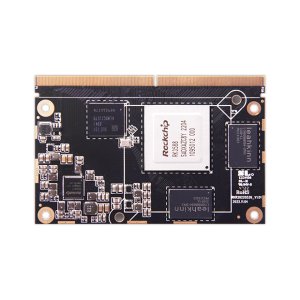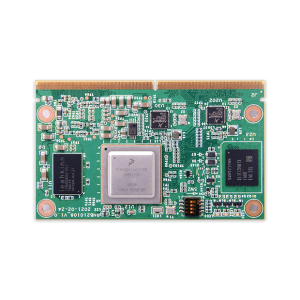How System on Module (SoM) Revolutionizes IoT Development
How System on Module (SoM) Revolutionizes IoT Development
Blog Article
Edge research has surfaced as a revolutionary development in the tech business, allowing quicker data control and reduced latency by bringing computational energy nearer to wherever data is created. A key innovation fueling that transformation may be the increase of imx8m nano computer on module which are small, successful, and flexible research products made to combine seamlessly into tailored electronics systems.

The Position of Computer on Adventures in Side Computing
Computer on Segments have become indispensable in edge research because of their power to streamline electronics style while maintaining powerful control capabilities. According to a recent record by MarketsandMarkets, the worldwide side research market is projected to cultivate from $40.84 billion in 2021 to $132.11 billion by 2026, with COMs enjoying a substantial role in this expansion.
These adventures are particularly impactful in industries requesting real-time knowledge examination at the edge. For example, the transportation business utilizes COMs in autonomous vehicles for real-time decision-making, while intelligent cities release them to control programs like traffic flow and energy distribution.
Lightweight and Versatile Style
Among the standout faculties of Pc on Modules is their small and modular design. This enables developers to combine high-performance research power in to edge products without the necessity for considerable equipment redesign. A study by IoT Analytics found that 68% of companies implementing IoT solutions consider modular hardware like COMs important for rapid implementation and scalability.
COMs also help customizable configurations, making them ideal for a wide range of applications, from commercial automation to healthcare. Their capability to adjust to particular demands is a driving force behind their ownership in edge research systems.
Energy Efficiency and Performance
Side research devices usually work in conditions with restricted power resources. COMs address that concern by providing optimized power efficiency without limiting on computational strength. A study by Allied Industry Study highlighted that energy-efficient edge processing alternatives are expected to rule the industry through 2030, placing COMs as a critical part for reaching this goal.
Moreover, with breakthroughs in processors and integrated artwork, COMs today supply the performance required for AI-driven programs at the edge. That not merely enhances real-time features but in addition reduces dependence on centralized cloud systems.
Why the Future Goes to COMs
With worldwide data generation estimated to achieve 175 zettabytes by 2025, side processing is placed to be integrated than ever. Pc on Adventures offer an convenient, energy-efficient, and scalable answer for control this influx of data. Their relevance across diverse areas like healthcare, production, and telecommunications just underscores their vital position in surrounding the future of edge computing.
COMs are no longer only a technological trend; they are the backbone of next-generation side techniques operating creativity and effectiveness throughout the globe. While the need for side computing is growing, so can the significance and impact of COMs in this fast developing landscape. So, it's secure to express that Computer on Adventures are here to stay and will keep on surrounding the ongoing future of side computing.

Realization
Edge processing is transforming the way we method and utilize knowledge, with Computer on Modules at the lead of the revolution. Their compact design, usefulness, power efficiency, and efficiency make sure they are an ideal solution for running real-time data at the edge. As industries significantly rely on edge processing for his or her procedures, COMs can enjoy a crucial role in driving creativity and effectiveness in these systems. Report this page